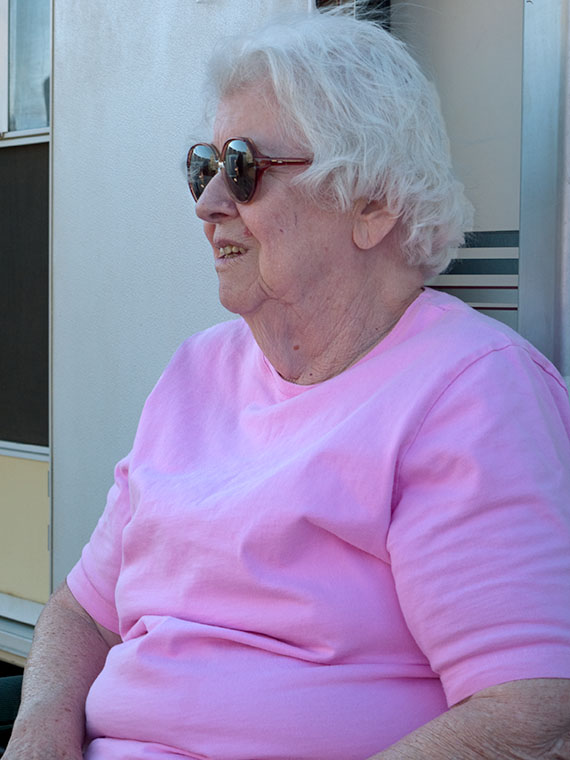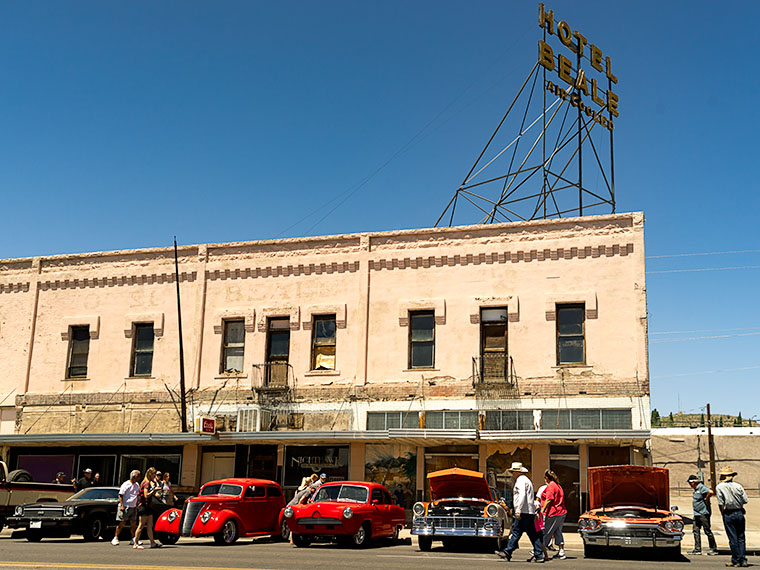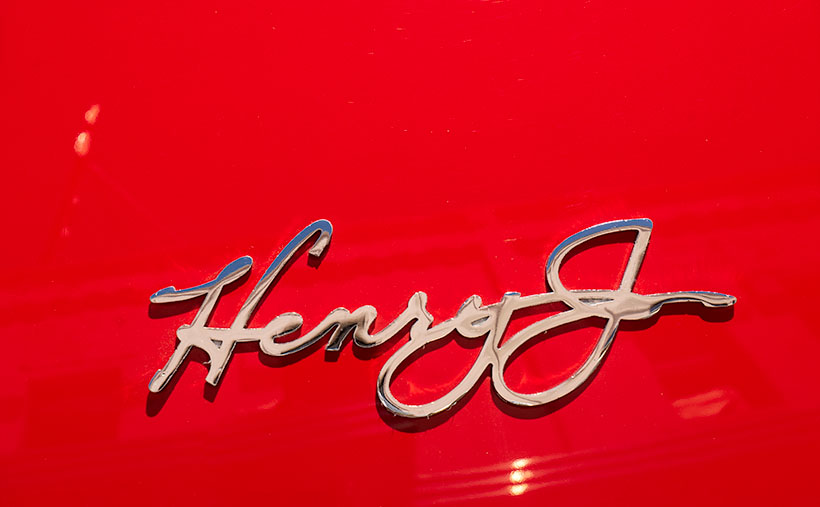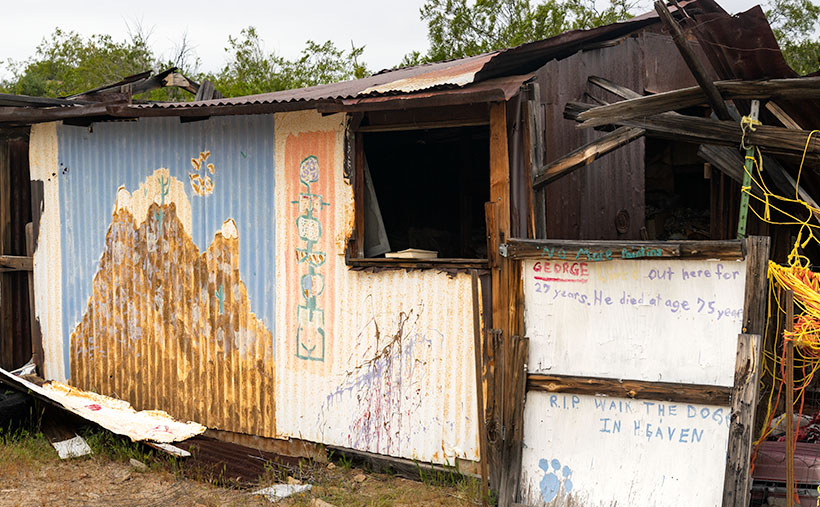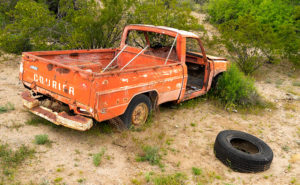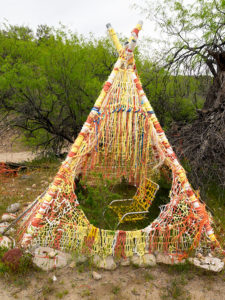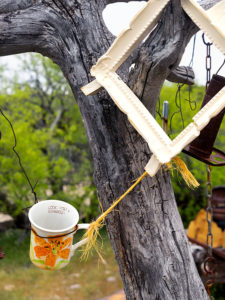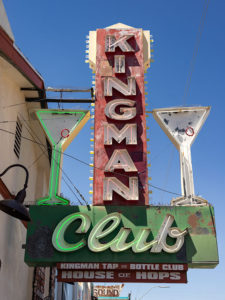
You’ll have to bear with me this morning; I’ll be a bit out of sorts because for the next few days because I’m on my own. Queen Anne’s girlfriends left for Newport Beach to pick up sailors, and Anne begged to go along. I know she’s only going to spoil their fun because she’s the only one that has a husband at home. Her trip has disrupted my morning routines. I had to make coffee for myself, no one warmed my socks in the microwave, I had to go outside and fetch the paper, and I made breakfast for myself. Isn’t that awful? I’m going to get even by driving down to the Sun City West Library and flirt with hot chicks. But before I go, I want to tell you about this week’s picture.
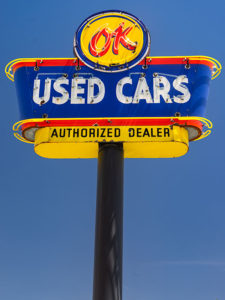
The third image of our May series of Cars as Graphic Art comes from our Kingman visit at the beginning of the month. The model for this shot was a 1955 Chevrolet Bel Air two-door hardtop, and you can quickly tell that from the unique chrome strips and pattern of colors. This year was a milestone for hot rod Chevys because this was the car that started the trend of performance family sedans. 1955 was the first year (since 1918) that a V8 was a Chevy option, and it came in three flavors, including the Super Power Pack rated at 190 hp. I like this year because it was before American Car Manufactures overdosed on tail fins and chrome, so it’s style is more sedated.

I picked this week’s picture for several reasons. Firstly, the composition gives the viewer all of the information needed to identify the car, and it fits neatly within the art world’s Rule of Thirds. Next, although the white section seems flat, the subtle gradation shows the fender’s top curve. Finally, I like how the white on the body is not the same as in the chrome insert; that’s the way it came from the factory. You can see a larger version of Bel Air on its Web Page by clicking here.
OK, now that I’ve finished my Sunday chores, I’m ready to paint the town. I still got it ya’know. All I have to do is flash a big smile, raise an eyebrow, and confidently say, “so, how you doin’?” It gets them every time. Now I need to find where Anne hid my false tooth. I hope you enjoy viewing this week’s post and please come back next week when we’ll show the final image in May’s Kingman series.
Until next time — jw

